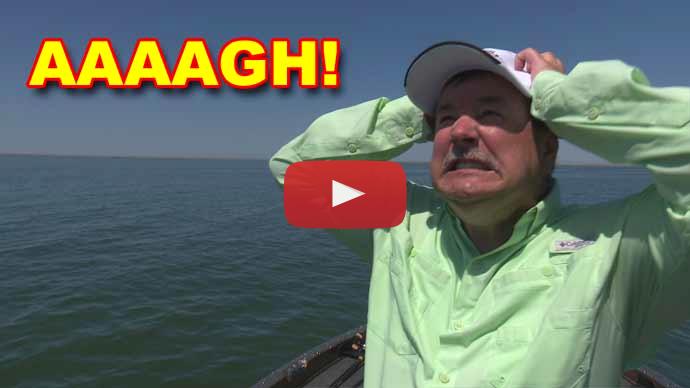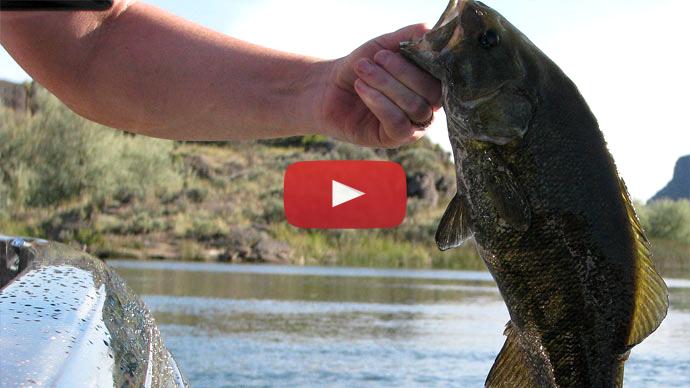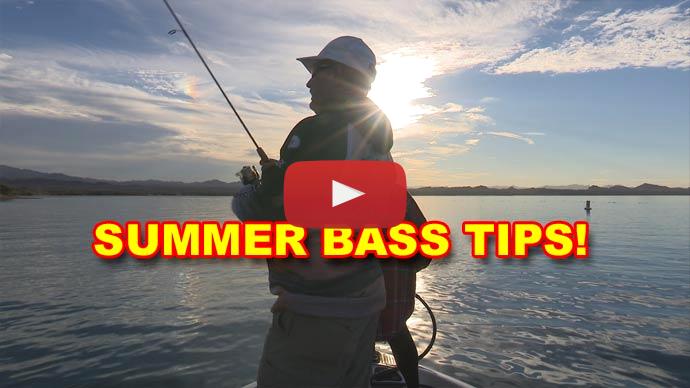Hey guys, Cliff Perch here with BassResource.com. Today, we're talking about drop-shotting in the summer. So, in the summertime, a lot of parts of the country, if you've got some deep water, those fish are gonna be moving out to those offshore breaks, offshore humps, offshore reefs, getting out there where that main current's at, and in near some of that deeper water. So, the drop shot technique is really good because if fish is well deep, shallow, and it's kind of a year-round technique that you can use in situations that are all different. But as far as those fish getting out in some of those offshore humps, this is a great way to get down to 'em fast and target exactly where they're at. And the other thing was with the advent of forward-looking Sonar, the new technology with all the electronics, this is a really great way to specifically target exactly where the fish are at.
You know, a lot of times, I can see they're 40 feet out in front of me, they're down 20 feet, and they're right on the edge of that break. Well, if I cast out there in line with my arrow, I can see that bait falling. I know whether I'm two, I'm five feet too far, I can pull it a little bit, or I need to reel in, and recast, and get it over there, you know, so, it's great for that real specific fishing. And like I said, with that... with the electronics, now you can really target those fish, and the drop shot is a great target bait. It's not so much, wonderful, covering water unless you're on like a moving river where you're kind of drifting shoals and stuff like that. It works well.
But in general, I'm just targeting specific bass, specific rocks, specific breaks, a school of bass, you know, something like that. So, I'm throwing it over there to a specific spot. And again, you've... you can see a lot of that now on your electronics.
So, most of the time I'm gonna be using it on light line. This is about an 8-pound test, fluorocarbon. And I've got it matched with a light wire hook, and a little light drop shot weight. If you've got heavy current. And I might have to go up, three-eighths or half-ounce. Right now, quarter-ounce, if I don't have a lot of wind, quarter-ounce is gonna really handle what I like the best about it when they pick it up. There's not a lot of weight there to feel unnatural to 'em or anything like that.
And with the light line, you know, it falls quick, and it matches it well. So, I'm using a Phoenix 7’6” medium action rod and, you might go... opt for a little shorter rod than that. I like the longer one. It gives me a little more leverage and room to pull the line and straighten the line out. If I've got a bow in it or some current or something like that, I can move a lot more lines. So, I like it, I like that 7’6” but I've, I've caught millions of them on, you know, seven footers, 6’9”, you know, they all work. It just depends on what you're comfortable with. But what you want is a medium action or a medium light action where you can handle that light line, and you don't wanna overpower, you know, on your hook set.
If you got a heavy rod, you're gonna break that light line, set in the hook. And as far as the type of hook set goes, I wanna make sure that when a fish picks it up, I drop it down there on that target. When a fish picks it up, I'm gonna reel into 'em until that line tightens up, and you start to get pressure or tension on that rod tip, and it starts to bow a little bit. That's why it's a real soft tip. And then, you know, as I reel into 'em, then I'm setting the hook, and putting a good bow in the rod. But you don't have to just, you know, flip and stick crack 'em. It's one of those deals I'm gonna reel into 'em to tighten it up on 'em.
They've already got it, and they're probably swimming off, you know, that tells you go and reel into 'em and bow up on 'em. So, it's not a real violent hook set. It's just reel and pressure and, you know, if you feel like you've got some bow in the line, or it wasn't as tight enough, you can reset that hook and just make sure it's in there. But in general, it's like a reel and bow-the-rod hook set. So, that's what I'm gonna be using, some of these offshore schools. And as far as baits go, I really don't get far from a little straight-tail worm. This is the new cliffhanger from Big Bite Baits. It's something that we worked on, and I'm really excited about.
It's similar to a lot of the West Coast hand-pour worms that we've always used. You want really soft, really natural, and semi-buoyant plastic. But what it also does is the sensation soft plastics adds a really strong scent to it. So, I like that I'm able to still have that hand pour softness and the good colors, but add that heavy scent to it. So, it's a really great drop-shot worm. It's a brand new one, and we're excited about that. I've caught lots and lots of fish, just testing and messing with it over the last year. And it works really well. So, again, my... I'm gonna opt for a straight-tail worm, probably 90% of the time I'm drop-shotting.
You can use little crawls, you can use little tubes, you know, stick baits, all kinds of things will work, creature baits. But in general, I really just like the straight-tail worm. I don't want a lot of action. I want it just to look natural, you know, maybe, just look like something that they ate a lot as a small fry, you know, as a little baby bass, a lot of those little critters that they eat, really easy thing for 'em to get. They don't have to use a bunch of energy, and just a real natural thing. So, I like that straight tail worm most of the time.
Again, summertime, I'm looking mostly offshore. It depends, if you're on a lake that's maybe a natural lake and has a lot of vegetation, well, that might just mean the outside edge of the grass, or a big point in the grass where you might have a big spawning flat, and they might come out to the point in the grass. Well, it's great, along weed edges and stuff like that. So, that's another way to get 'em. You can use the same technique. It's the same idea. You're targeting a specific spot. You know, maybe where a school has set up on a grass point, you know, right where the grass, you know, drops to deep water, or the grass quits, or maybe shortens up and gets sparse, you know, they might set up in that stuff. And that's still, it's a great way to target those fish. You can vary some of the options on it as far as line size, hook size, weight size, stuff like that.
But in general, I like a soft rod, light line. They get a really good look at it. So, it's just something that I keep pretty simple in this situation. If you've got that heavy cover and that grass or that weeds, you might beef up your line size a little bit, maybe even go to a medium wire hook, but you don't want it to overpower that bait. As far as colors go, you know, you've gotta kind of match that to the body of water you're on. In the summertime, a lot of times, I might get a little wilder with my colors, use these pinks, purples, you know, those real wild colors. But also your real natural greens and green pumpkins, watermelon, and stuff like that. Those colors work well too. And especially, if you've got really good clarity, you know, if you've got more tannic or more dark water, you might wanna go with something more bold, like a black or a pink or a purple.
If you've got really gin clear water, those naturals, those natural bait fish colors of green pumpkins, watermelons, all those little natural colors that work real well. So, you can experiment with that. And, again, it's a fun technique. You can catch all kinds of... all sizes of fish on 'em. I've caught 'em, you know, schools and schools of little ones, but I've caught giant ones on it, up to 9, 10 pounds on it. So, it's definitely a technique that will get a lot of bites for you, and put a lot of fish in the boat.



